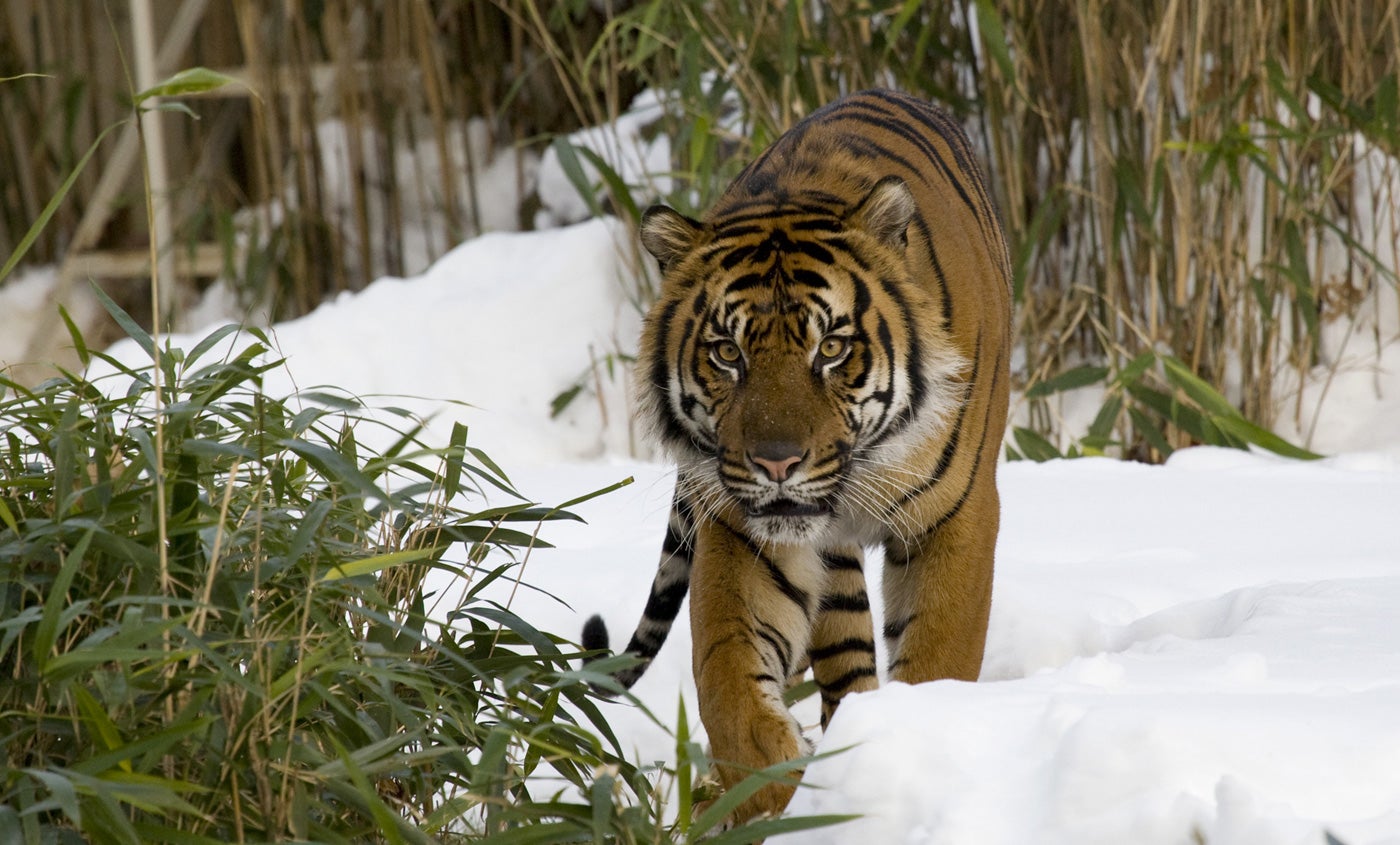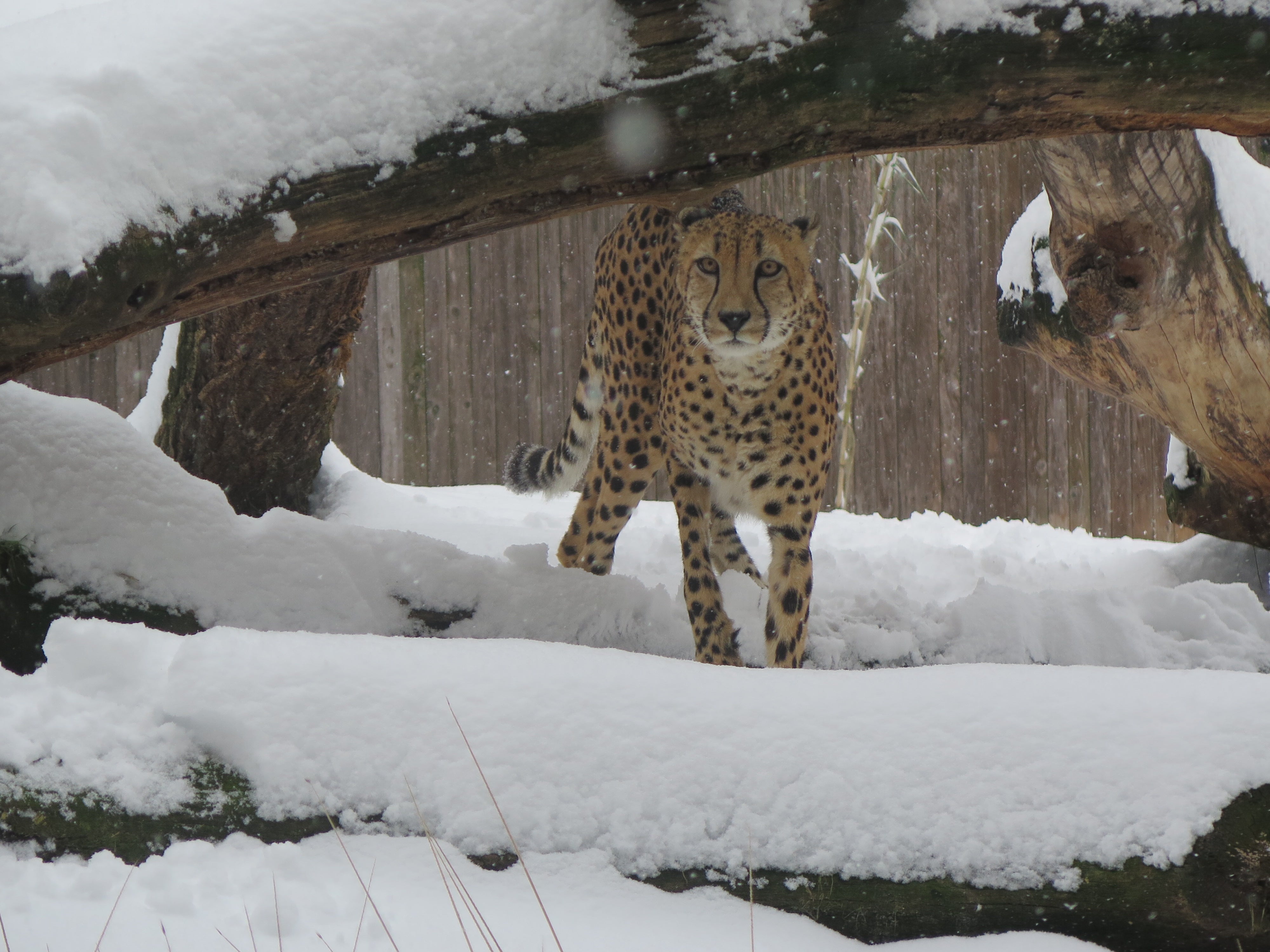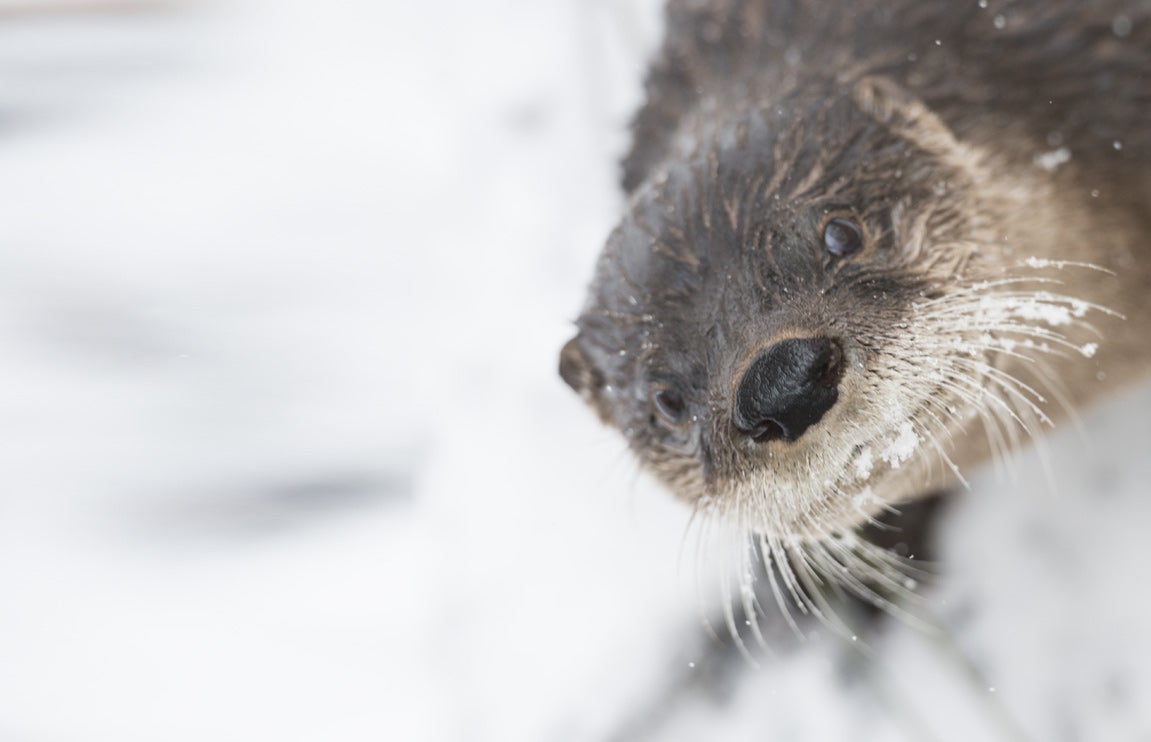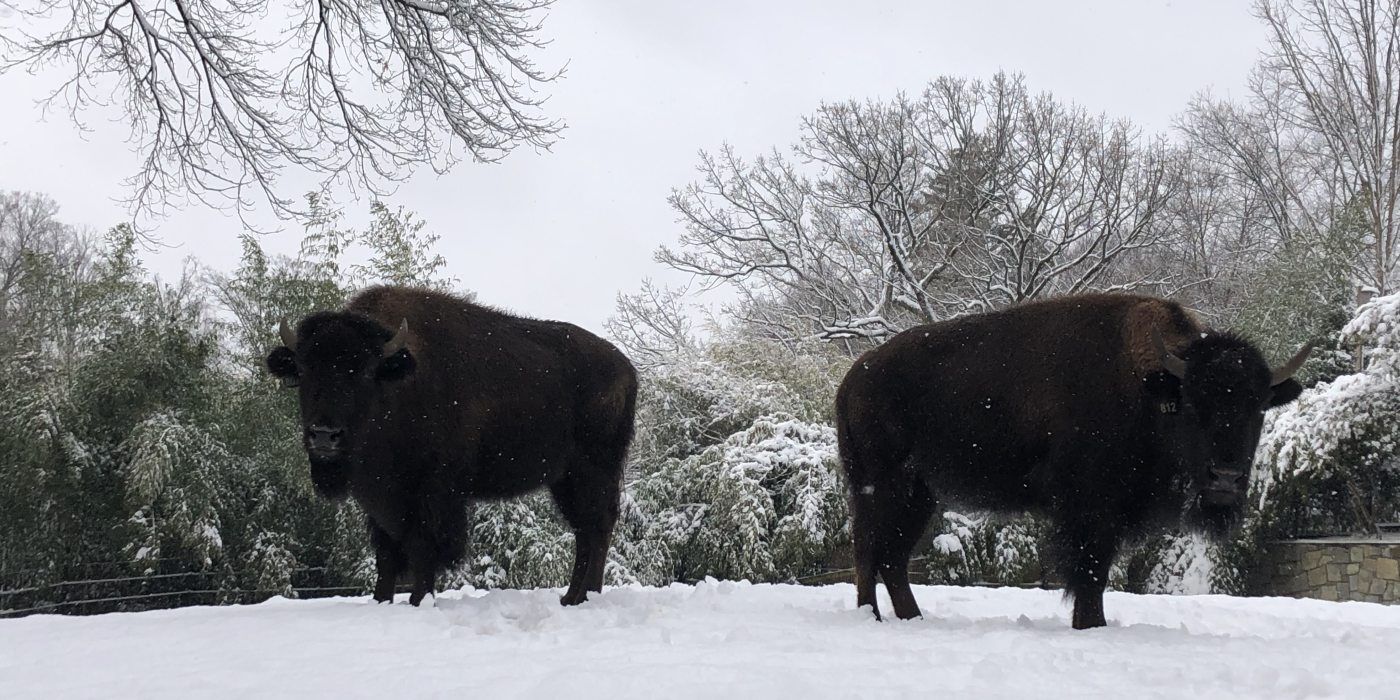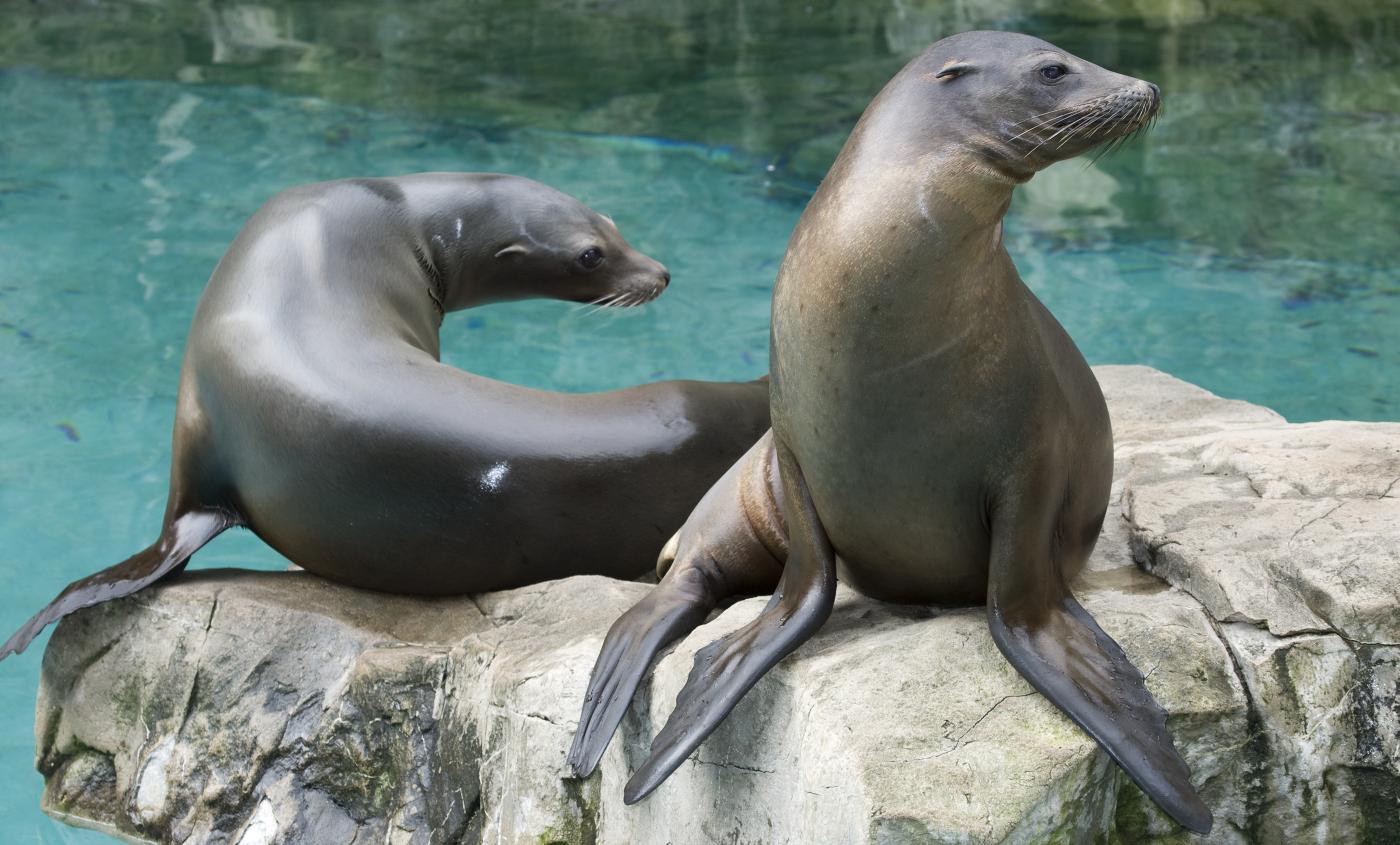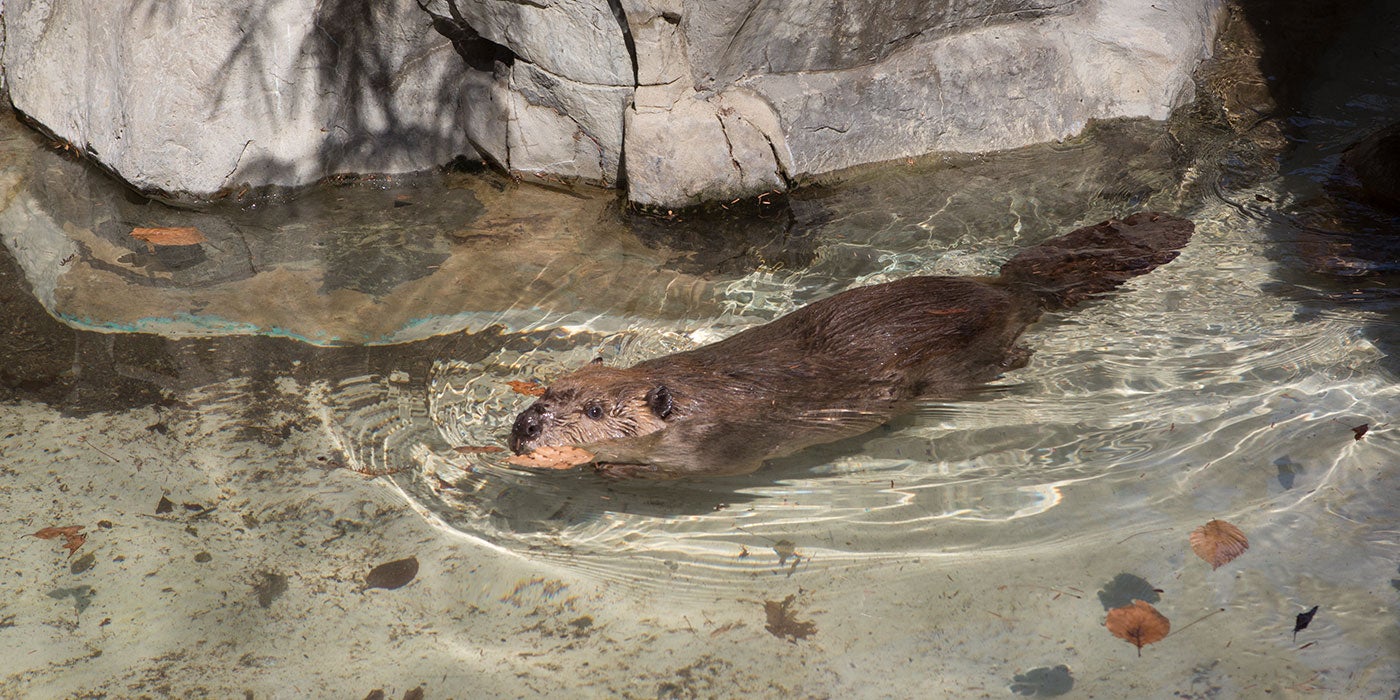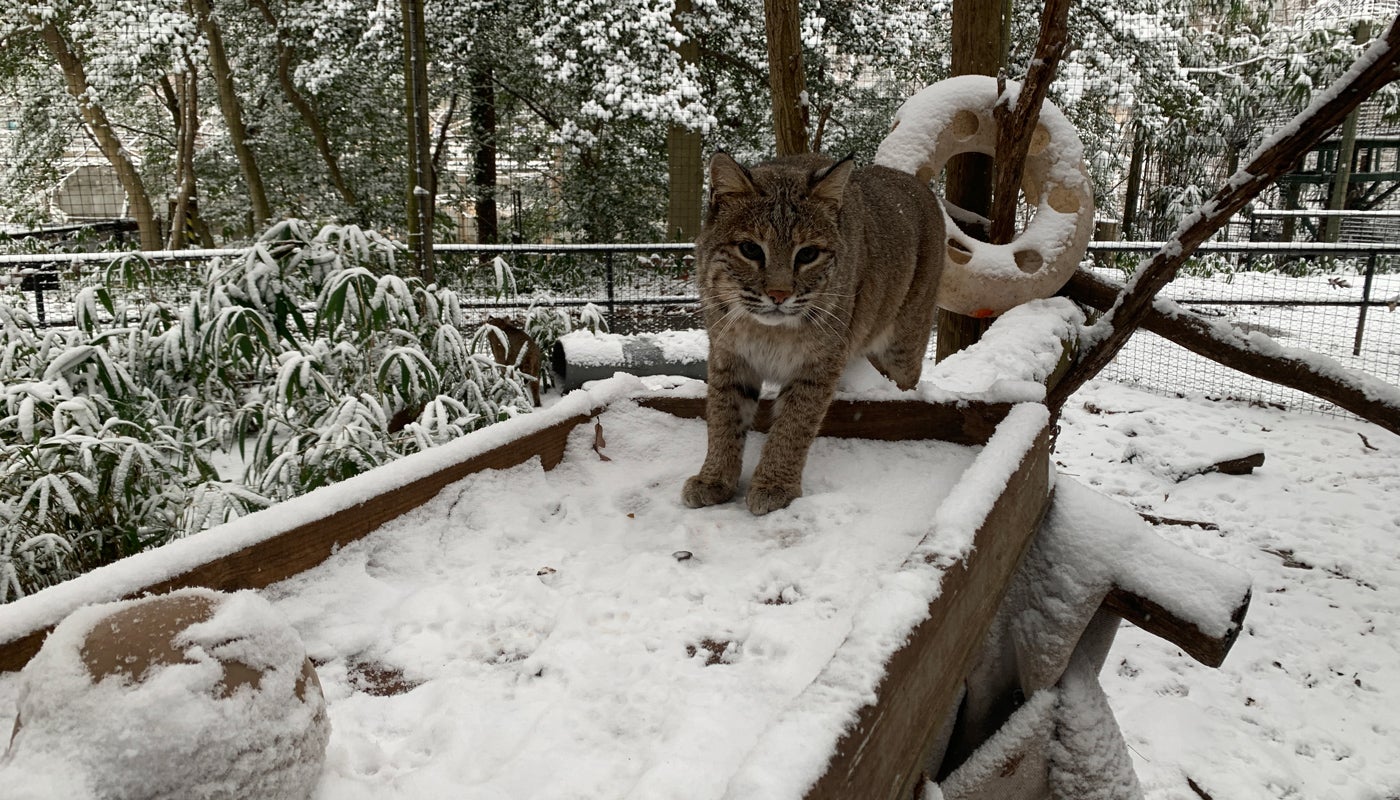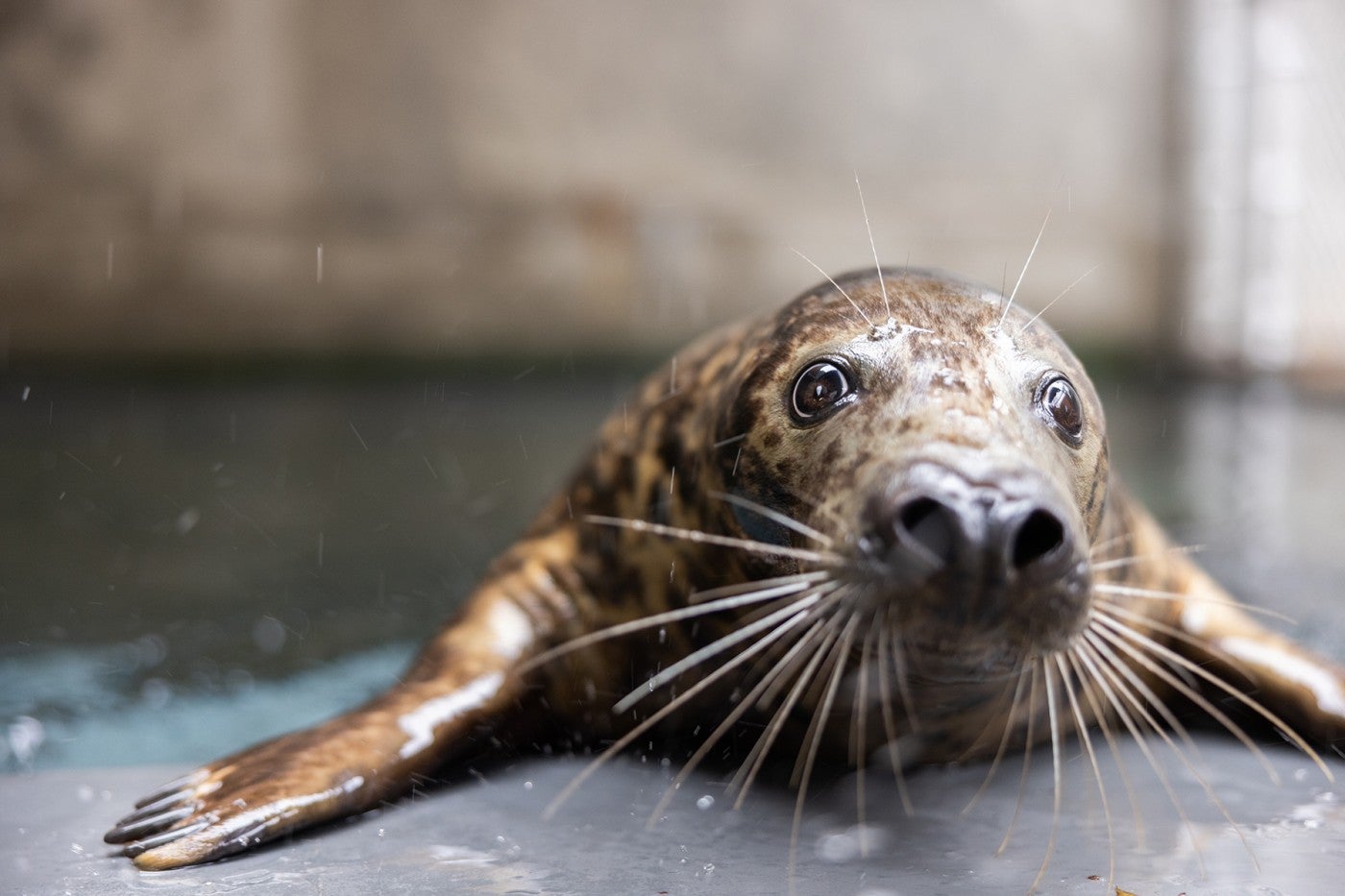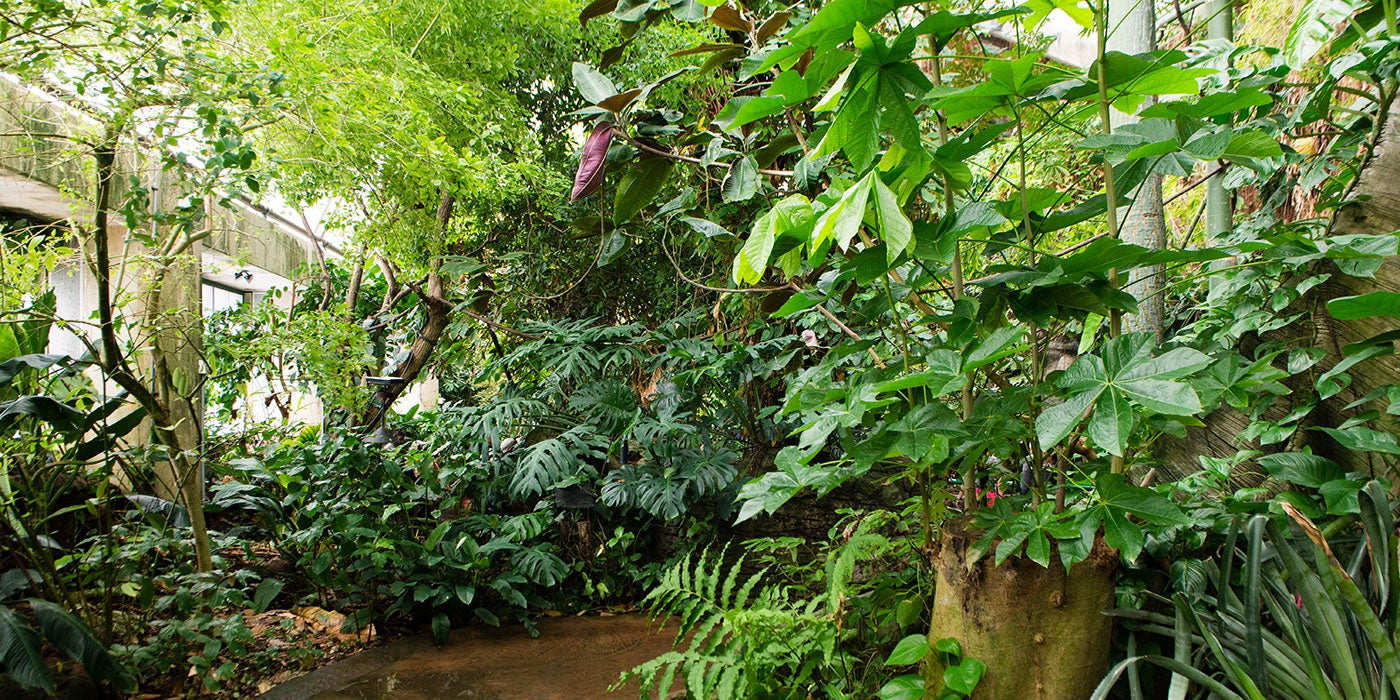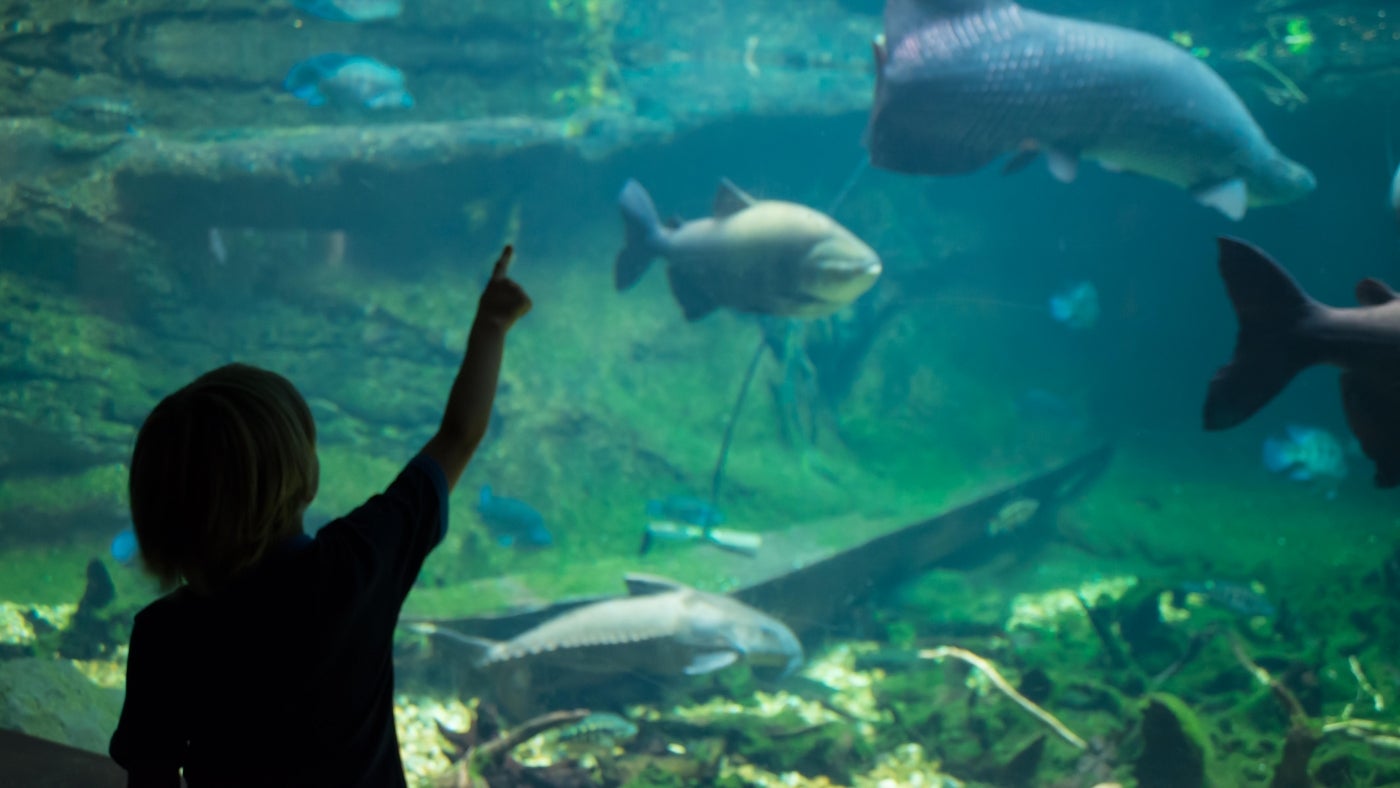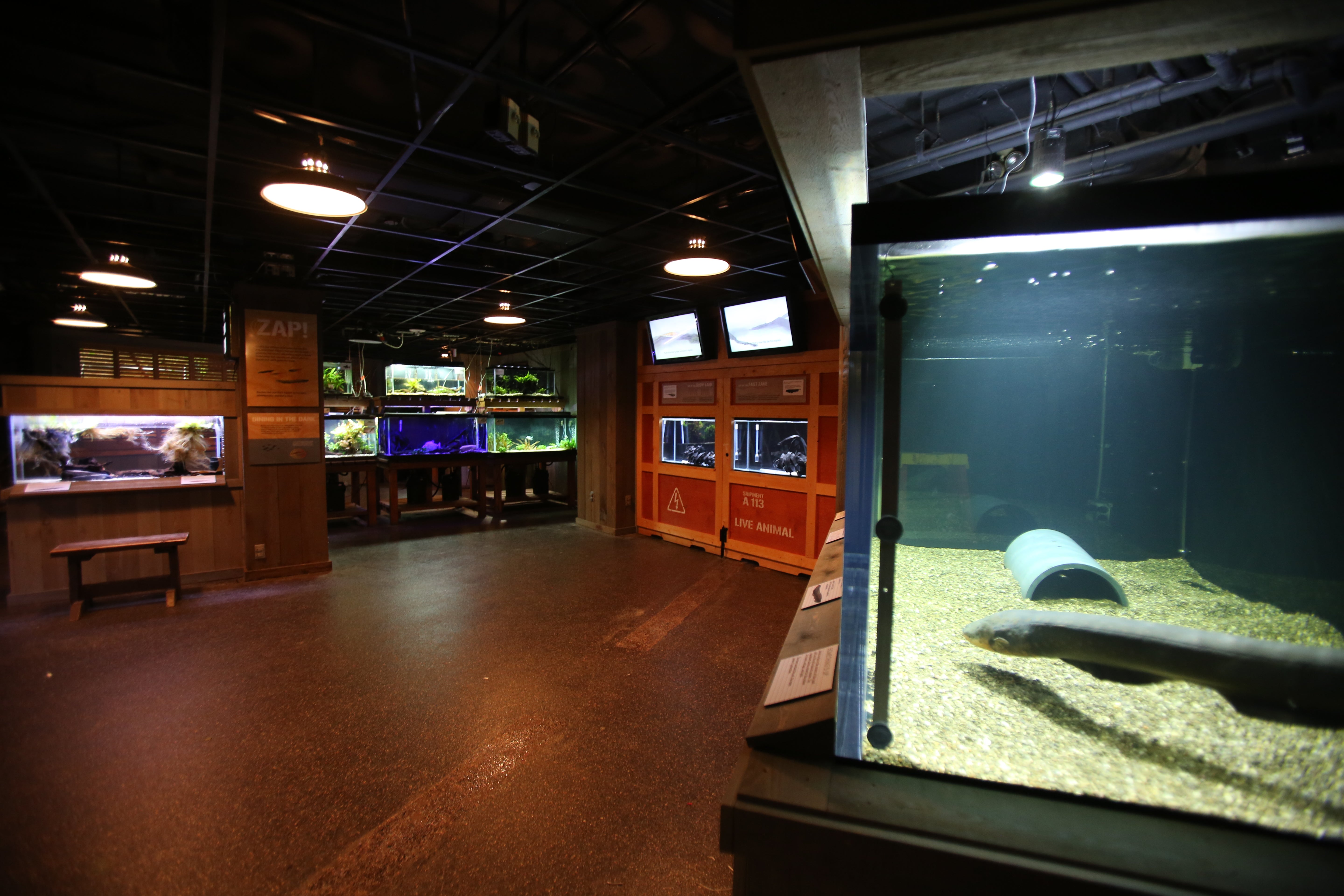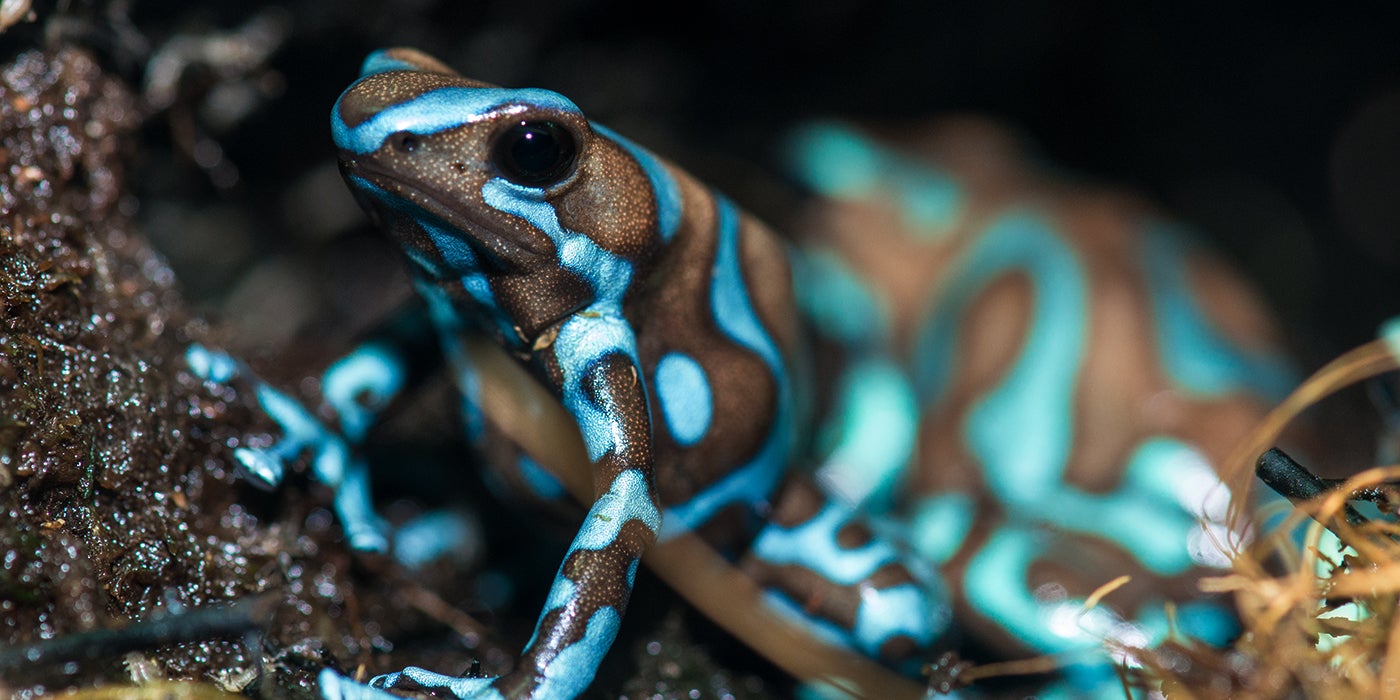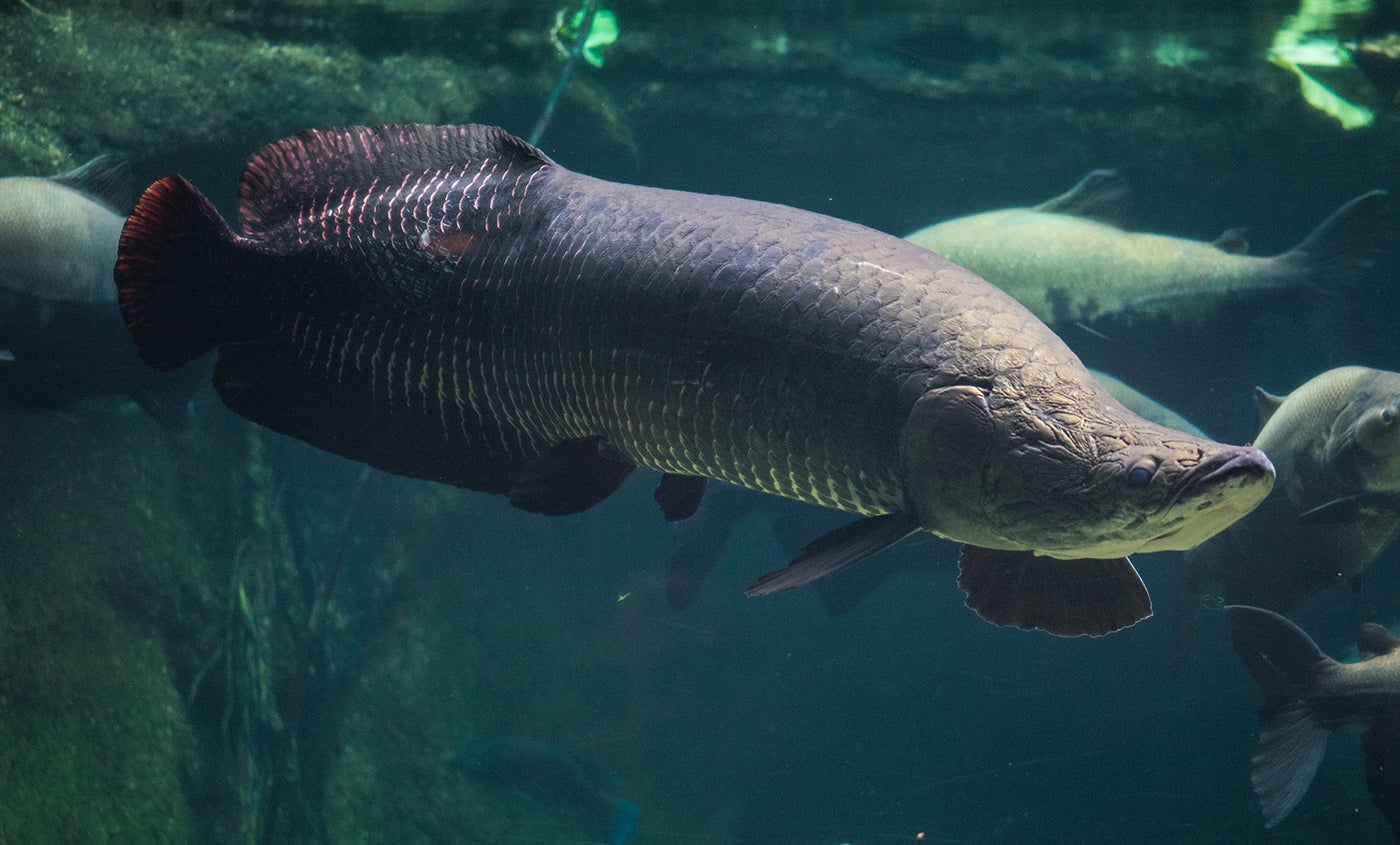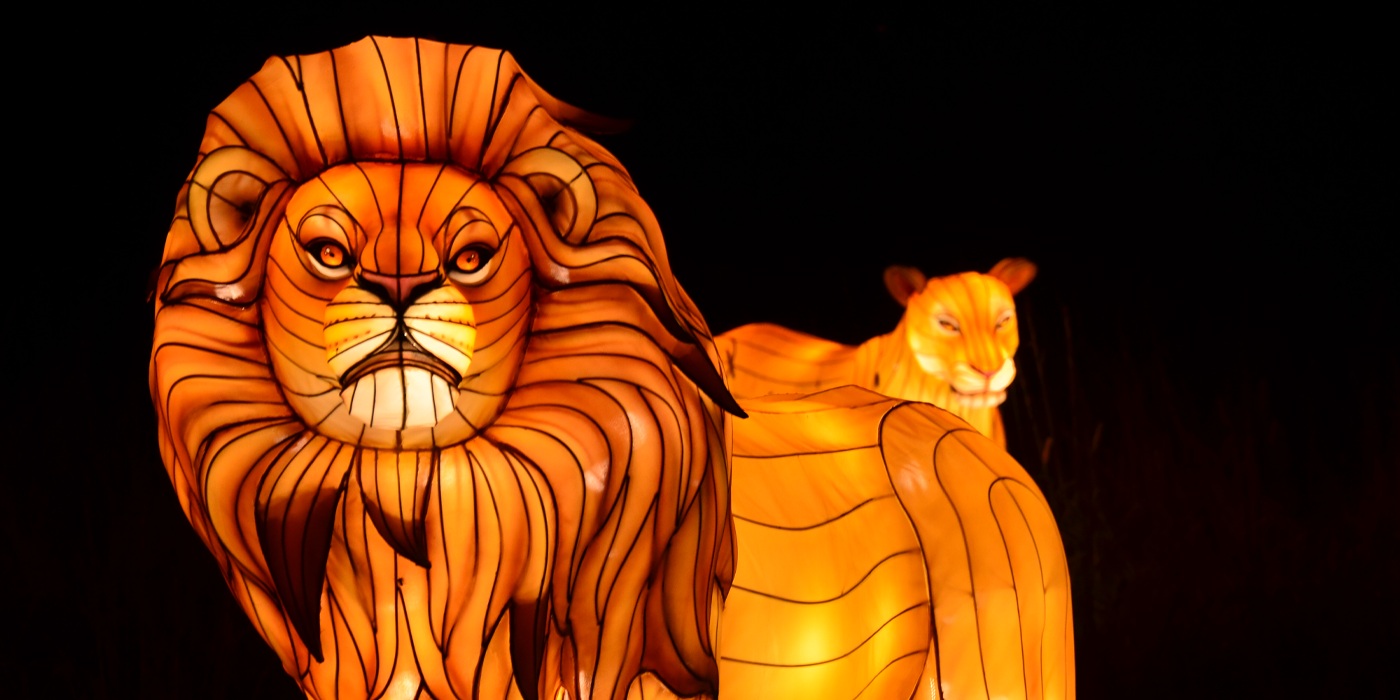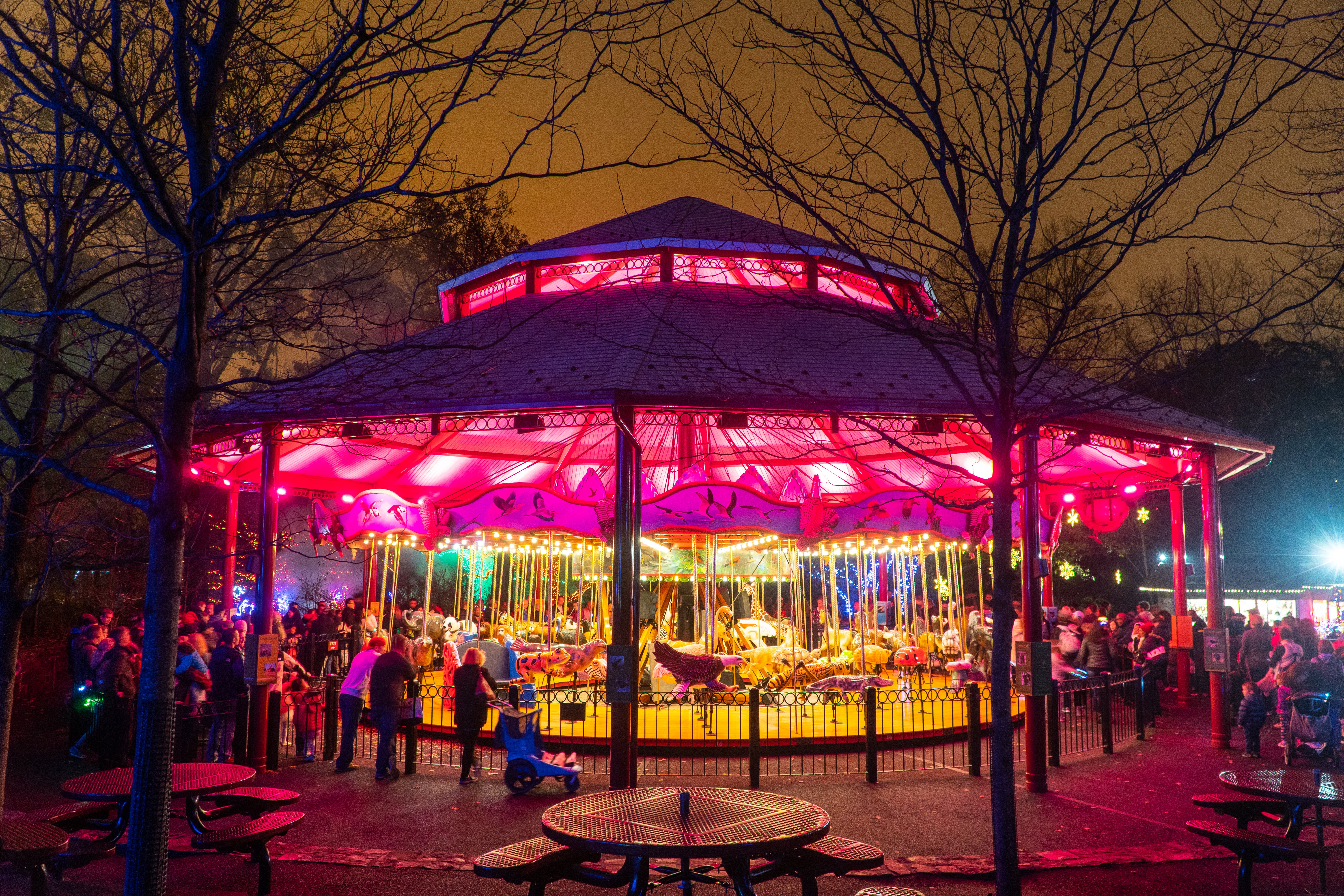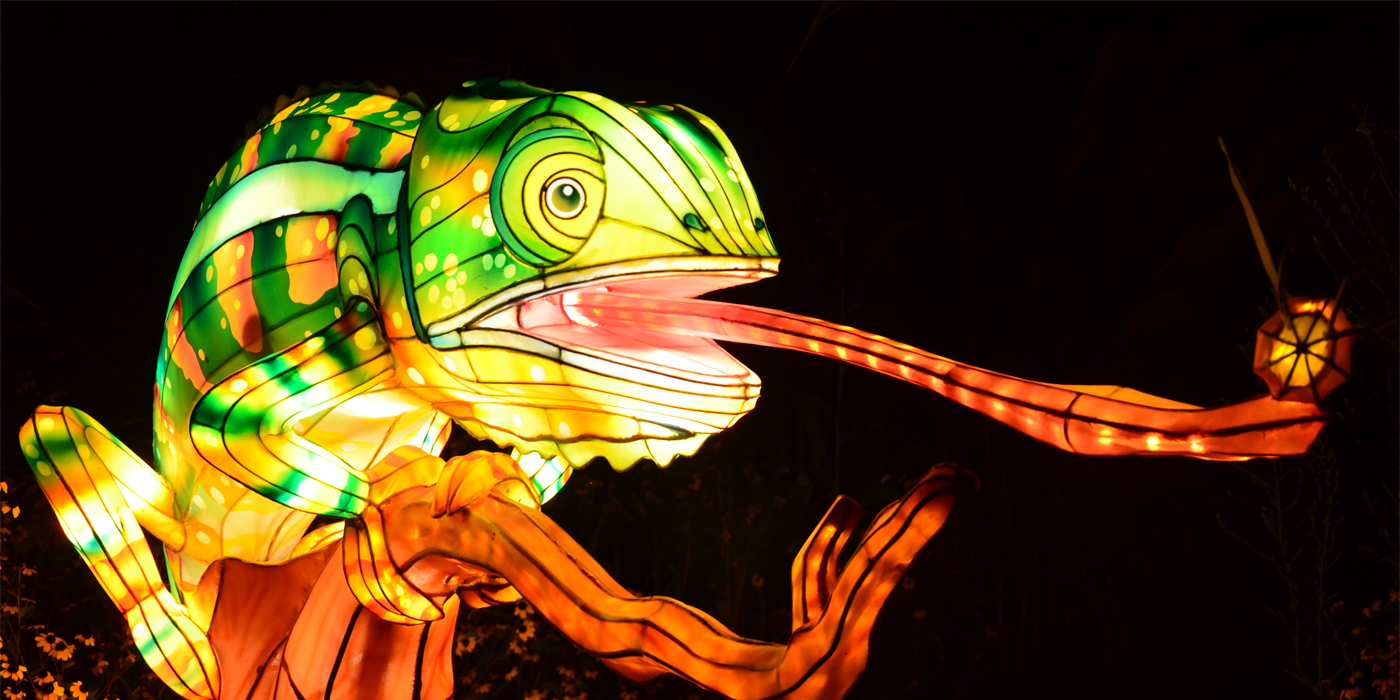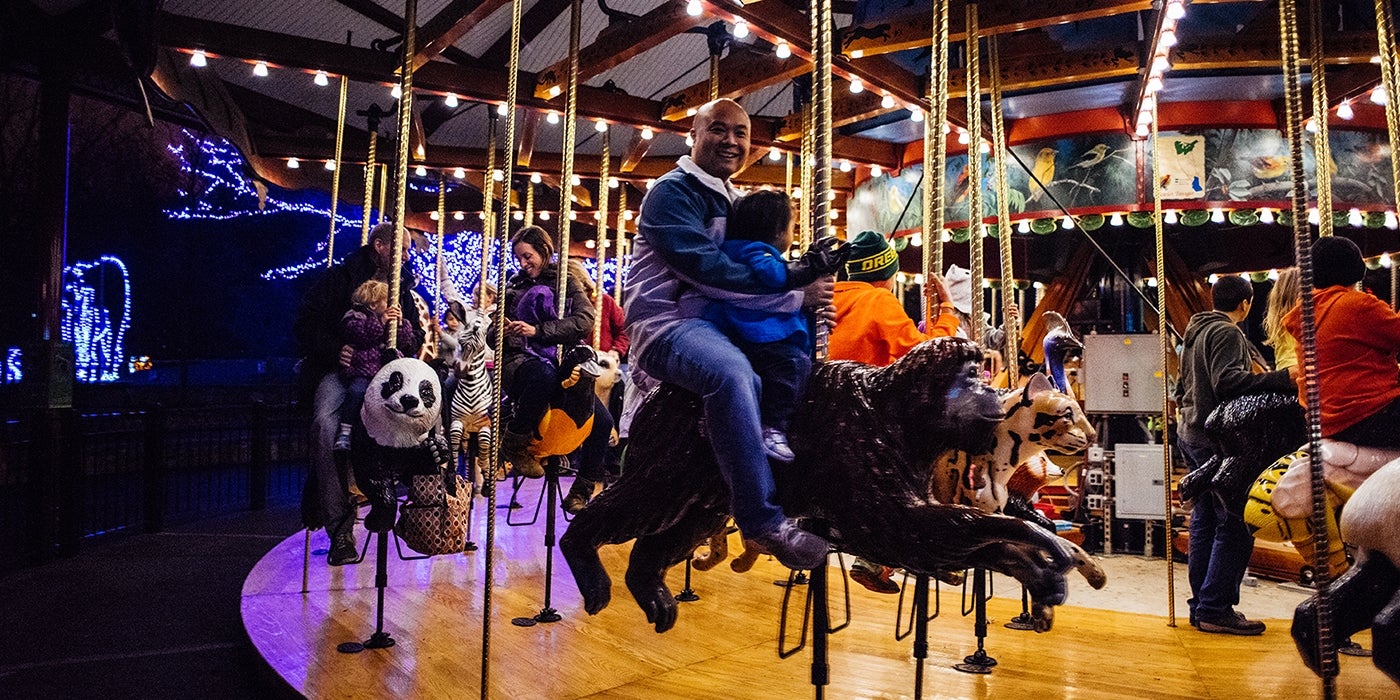It's the Most Winter-ful Time at the Zoo
Winter is one of the best times to visit the Zoo!
When you’re making a list and checking it twice for winter-time activities in Washington, D.C., consider planning a trip to the Zoo. The cooler months can be the perfect time to see your favorite animals without the crowds. So, bundle up and get ready to embrace the winter with animals who thrive in the cold.
Frigid Fun
While many of the animals along the Asia Trail come from warmer climates, our red pandas are a delightful exception. Red pandas are native to high-altitude, temperate bamboo forests, like those found in the Himalayas and other mountainous regions of Asia. Plus, red pandas breeding season runs from January to May, making it more likely to see our red pandas Asa and Chris-Anne playing in their outdoor exhibit space. We encourage visitors to stop by the red panda exhibit in the early morning or in the late afternoon, since the species is crepuscular, meaning they are most active at dawn and dusk.
Cool Cats & Cubs
The snow and ice aren’t so bad when you have a thick, fur coat to keep you warm! The big cats at the Zoo are well-equipped to handle the D.C. winters, especially the Amur tigers, who evolved to live in eastern Russia and China. But heated dens keep our cats comfortable, especially the African lions and cheetahs. And should it ever be too cold, all our big cats have the option to head indoors to their off-exhibit spaces.
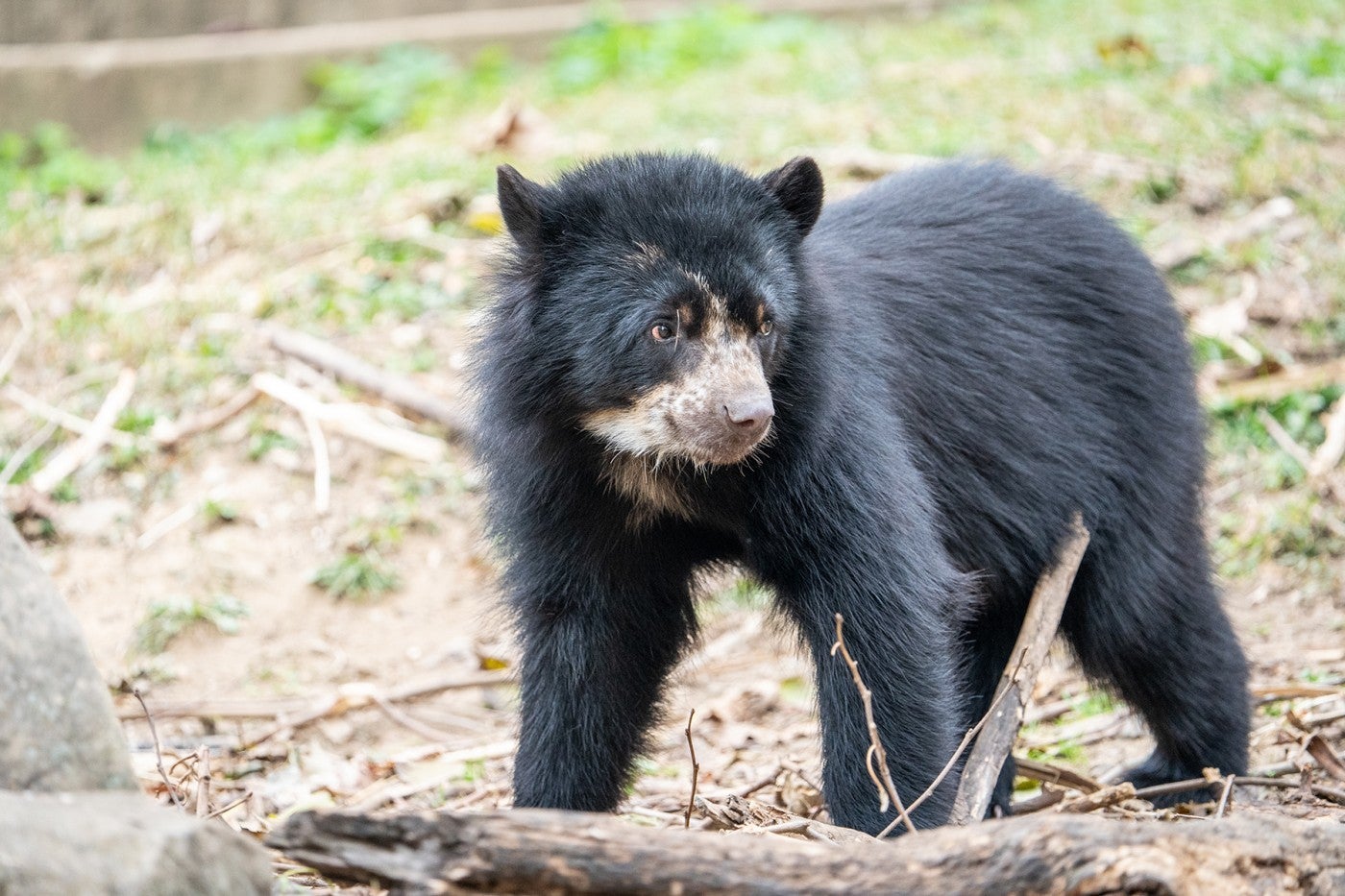
Hailing from “deepest, darkest Peru”, Andean bears Quito, Brienne, Sean and Ian don’t need wool duffle coats like their famous British relative, Paddington. Andean bears, also known as spectacle bears, are quite comfortable in cooler temperatures. Many wild Andean bears can be found in mountainous ranges in South and even Central America. The Andean bears can be seen in their outdoor spaces throughout the winter, and we are excited to learn whether Sean and Ian will enjoy the snow as much as giant pandas Mei Xiang, Tian Tian and Xiao Qi Ji.
There's Snow Place Like Home
Who better to handle an American winter than native species? American Trail is THE place to be during the winter months, when male gray seals and California sea lions reach their full, breeding weights—750 and 1,000 lbs. respectively. Watch daily animal feedings and demonstrations and learn about the amazing animals you might see in your own backyard, such as bald eagles, beavers and river otters. Plus, visit the American bison along Olmstead Walk and the bobcats at Claws and Paws Pathway to see how other North American species thrive in the cold weather.
Tropical Getaways
If you’ve had your fill of the cold, head to the Bird House! Relive summer days at the beach in the Delaware Bay aviary, where shorebirds run along the sand and the waters teem with horseshoe crabs, hermit crabs and a variety of fresh and saltwater fish. Migrate through the Prairie Pothole – a favored stopover for migrating ducks – into the Bird-Friendly Coffee Farm aviary where dozens of avian species, including colorful migratory songbirds, await. Take a seat and watch for ground birds moving between the coffee and ginger plants covering the forest floor. If you’re patient, you might even catch artificial rain showers that keep the aviary at a whopping 70% humidity!
On Saturdays, stop by the Observatory to sample Bird-Friendly coffee and learn how something as simple as a cup of coffee can make an enormous difference for migratory and resident species living in the tropics. Free coffee demonstrations and tastings run from 12:30 p.m. to 2 p.m. while supplies last.
Can’t get enough of the heat? Venture to Amazonia and walk through the forest of kapok, avocado and cacao trees to encounter a wide array of species including roseate spoonbills, a two-toed sloth and the awe-inspiring arapaima. Travel into the Electric Fishes Demonstration Lab, where you can learn about our 5-foot-long electric eel, and then watch Animal Demos at 11 a.m. and 1 p.m. Don’t forget to stop by our tropical frogs and salamanders, whose lush exhibits will make you forget about the chilly weather outside.
Walking in a Winter Wonderland
You don’t just have to visit the Zoo during the day, either! Consider celebrating the changing of the seasons at ZooLights. Travel through several ecosystems and view beautiful, larger-than-life animals, from towering jellyfish to playful artic foxes. Just be sure to check the forecast and bundle up – our indoor animal exhibits are closed so the animals can get a good night’s rest. Tickets are $6 and can be purchased online. Note: ZooLights ends on December 30.
Paw-some Shopping
Dining options at the Zoo have something for everyone. The newly opened Zoo Market Cafe offers made-to-order sandwiches, salads and hot breakfast sandwiches. Enjoy quick bites like hot pizza, calzones, chicken tenders nearby at Sbarro. You can escape the chill inside the Mane Grill with sandwiches, burgers, hotdogs and more from Elevation Burger – or up the ante with ice cream and other cold treats from Carvel, Ben & Jerry’s, Dippin’ Dots or Dolci Gelati. And don’t forget to warm up with a cup of hot cocoa or Bird-Friendly Coffee at one of the several Vintage Views trucks located throughout the park—alcohol optional for our older guests.
Want to take that Bird-Friendly coffee home with you? Check out gift shops located inside the Visitor Center, at Panda Plaza, inside the Bird House and near the Great Cats exhibit. Whether you’re looking for a gift for an animal-lover in your life or wanting a souvenir to remember your visit, the Zoo’s gift shops have options for all ages. Bird-Friendly coffee and chocolate are available for purchase, plus toys, jewelry, clothing, books and more at our different shops. Didn’t get a panda plush before Mei Xiang, Tian Tian and Xiao Qi Ji departed? Don’t worry, we’ve got plenty in stock.
Know Before You Go
The Zoo’s hours are 8 a.m. to 4 p.m. during the winter months, with last admittance at 3 p.m. Indoor exhibits close at 3:30 p.m. ZooLights opens at 5 p.m. and closes at 9 p.m. Thursday-Saturday/8 p.m. Sundays.
The Zoo is conveniently close to both Metro Rail’s Red Line Woodley Park and Cleveland Park stations. The Zoo is just a 10-minute walk from either stop. The L1 and L2 Metro Buses also stop outside the Zoo. If you plan to drive to the Zoo instead, be sure to reserve parking ahead of time via our website. Parking is $30 per vehicle and accessible parking spaces are available in lots A, B and D.
The Zoo is on a hill with a gradual incline, so we recommend wearing comfortable walking shoes. A guest shuttle runs on a loop between the Bus Lot (upper Zoo) and Kids’ Farm (lower Zoo) from 11 a.m. to 5 p.m. in the winter.
Stop by the Visitor Center when you arrive for bathrooms and water fountains. At the info desk, you can rent strollers, wheelchairs and electronic vehicles, or purchase a Zoo map with coupons to use around the park.
